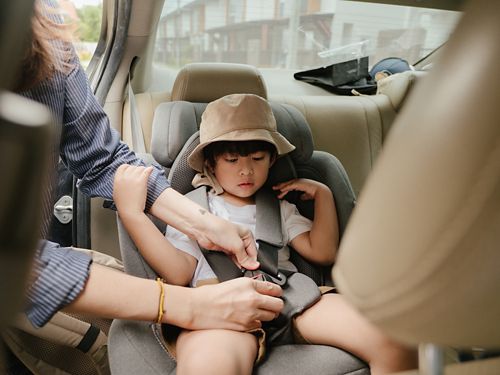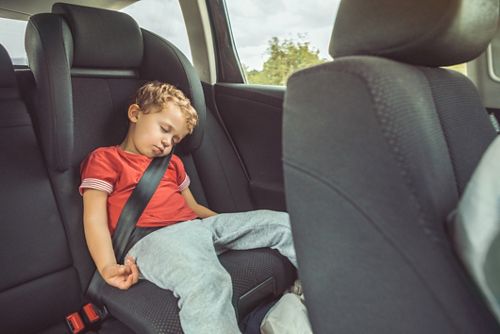What are Tennessee laws for child safety in vehicles?
Tennessee state law requires that all people riding in vehicles must wear safety belts. Children 8 or younger or shorter than 4 feet, 9 inches must sit in a child safety seat. This could be:
- An infant seat
- Convertible car seat or other car seat
- Booster seat
The kind of seat you need depends on your child’s size and age. Below are the rules for car seats in Tennessee:
Infants younger than 1 and children of any age who weigh 20 pounds or less must sit in a rear-facing car seat that meets federal safety standards for motor vehicles.
- A rear-facing car seat gives your child the most protection for the head, neck, and spine.
- If your vehicle has a back seat, the car seat must be placed there.
- Never place a rear-facing car seat in the front seat when there is an active airbag on the passenger side.
- Some vehicles have an on/off switch for the airbag. If this is the case in your vehicle and you must use the front seat, switch the airbag off.
Children ages 1–3 who weigh more than 20 pounds must use a forward-facing car seat that meets federal safety standards for motor vehicles. If your vehicle has a back seat, the car seat must be placed there.
Children ages 4–8 who are shorter than 4 feet, 9 inches must use a belt-positioning booster seat that meets federal safety standards for motor vehicles.
- This type of seat raises your child to the right height to safely use a seatbelt.
- The seatbelt holds in both your child and the seat.
- Adjust the vehicle seatbelt to fit your child when they are sitting in the booster seat.
- If your vehicle has a back seat, the booster seat must be placed there.
If your child has special needs and cannot ride safely in a standard child safety seat, then you can use a special seat.
- The seat must be professionally made.
- The seat must meet the federal standards that apply to your child’s age, height, and weight.
- A child 8 or younger cannot use a lap belt or shoulder seatbelt alone.
- If your child uses a specially made seat, the driver must always carry a copy of a doctor’s note for the seat and be ready to present the note if asked.
Finding the right seat for your child
Use the chart below to find the type of car seat required for your child. Once you know what kind of safety seat your child needs, see your vehicle owner’s manual and the car seat manual for guidelines to install the seat.
Frequently asked questions
Important safety information
- Every car seat has an expiration date on the bottom. Never use a seat past that date because the plastic may not be strong enough to properly protect your child.
- Be sure the car seat is installed correctly. Use the car’s safety belt or latch system to lock the seat into the car. Your car seat should not move more than 1 inch side to side or front to back. Be sure the car seat straps fit correctly over your child.
- To get help installing your car seat or to have it checked by a certified inspector, go to www.seatcheck.org or call 1-866-SEAT-CHECK. You can also get information on child passenger safety at www.safekids.org.
- Fill out the product card from the maker of the seat and mail it. That way, they can contact you if the seat is recalled.
Visit www.nhtsa.dot.gov for a list of all car seats recalled since 1990. This site also ranks many new car seats on how easy they are to use and how well they secure your child.





